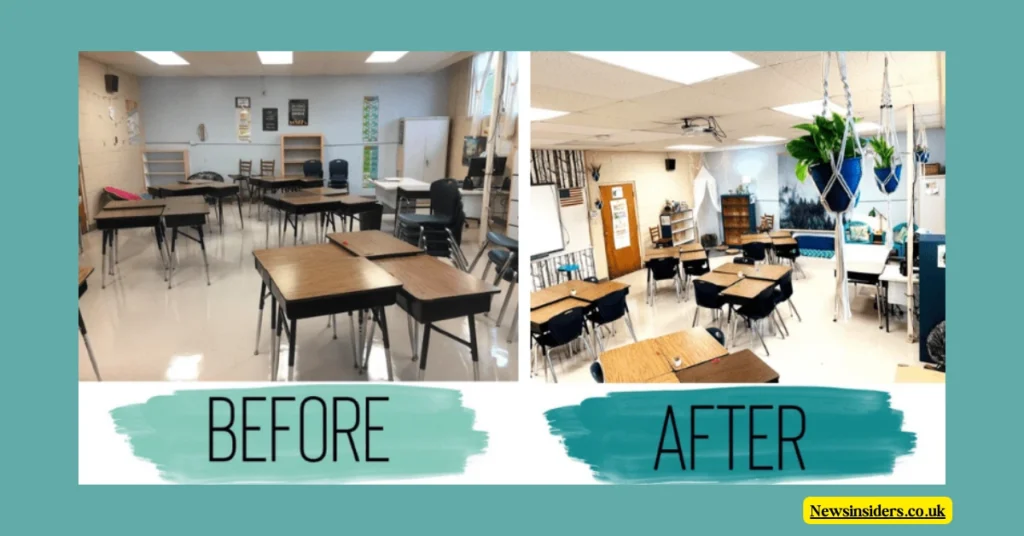How Zet Up Mat Classrooms Revolutionize Student Engagement
Bringing innovation into the classroom has always been a hallmark of great teaching. Designing a “Zet Up Mat Classroom” stands out as one of the most elegant and inviting ways to transform traditional learning environments. By incorporating flexible spaces, interactive zones, and sensory elements, this concept fosters creativity and inclusivity. Imagine a classroom where every student feels welcomed, inspired, and motivated. This is the essence of a Zet Up Mat Classroom. Whether you are an educator seeking a fresh approach or an advocate for collaborative learning spaces, this guide will walk you through actionable steps to design your own.
What is a Zet Up Mat Classroom?
A “Zet Up Mat Classroom” refers to a learning environment where physical space is strategically organized to support various learning activities, with a particular focus on interactive, hands-on tasks. The concept often involves using mats, rugs, or designated areas within the classroom where students can engage with different subjects or activities in a more focused and organized way. These mats are usually spread out in specific zones within the classroom, and each mat or zone might have its own purpose. For example, one mat could be dedicated to group work. At the same time, another might be designated for individual reading or a quiet zone for mindfulness and relaxation. The mat symbolizes the learning space, promoting structure, clarity, and intentionality in the classroom.
The Benefits of a Zet Up Mat Classroom
Adopting this dynamic setup offers numerous advantages for both students and educators:
Enhanced Engagement
Students thrive in environments designed for interaction, creativity, and movement. A welcoming space reduces stress and encourages active participation.
Better Collaboration
Flexibly designed zones for group work build teamwork skills while inspiring peer-to-peer connections.
Encouragement for Independence
Visual aids and labeled areas empower students to use resources independently, reducing teacher dependency.
Inclusive for All Learning Styles
From quiet reading corners to active play zones, the design accommodates varying student needs.
Efficient Use of Space
Optimizing the classroom layout ensures every corner serves a purpose, creating a seamless balance of function and aesthetics.
How Can Teachers Effectively Set Up a Mat Classroom?
Creating a Zet Up Mat Classroom involves careful planning and a thoughtful arrangement of furniture and resources. Here’s a guide to getting started:
Identify the Purpose of Each Mat/Zone:
Determine the specific role or function of each mat within the classroom. Will it be for group work, independent reading, or creative activities? It’s essential to define each zone clearly so students understand the expectations associated with each area.
Arrange the Mats for Easy Movement and Accessibility:
Position mats in a way that allows students to move freely between them. Ensure that each zone is accessible and provides enough space for all students to engage in activities comfortably. An organized and spacious layout can also prevent distractions, making it easier for students to stay focused.
Integrate Interactive Materials:
Equip each zone or mat with appropriate resources that support the intended activity. For example, for the group work mat, provide materials like whiteboards, markers, and cooperative games. For a reading zone, include books and reading materials. Interactive materials help foster engagement and encourage students to maximize their time in each designated area.
Real-Life Transformations and Results

Classrooms that have embraced the Zet Up Mat concept have reported higher levels of:
- Student engagement, as interactive zoning sparks creativity.
- Teacher efficiency, since tools and materials are readily available.
- Academic curiosity, with students feeling empowered to explore and ask questions.
For instance, in a fifth-grade classroom that employed this setup, students showed a 40% improvement in teamwork and an increase in test performance on group projects.
Read More: mastermind ann burgess j edgar hoover outfit in office
Tips for Success
Before finalizing your classroom, keep these tips in mind:
- Prioritize simplicity over complexity. Start small, then expand zones as needed.
- Avoid overloading the space with too many materials; create breathing room.
- Invest in durable materials to ensure long-term functionality.
- Observe how students interact with the setup and adjust accordingly.
Engaging resource decoration ideas, like themed posters or inspirational quotes, can also add charm.
Inspire Your Classroom with Innovation
The “Zet Up Mat Classroom” represents more than a teaching method—it is a philosophy of interaction, creativity, and holistic learning. By tailoring your classroom into a space that fosters collaboration, inclusivity, and comfort, you can redefine education for your students.
What are the advantages of a Zetup mat classroom?
Supports Different Learning Styles:
Not every student learns the same way. A Set-Up Mat Classroom can cater to a variety of learning styles, whether kinesthetic (learning by doing), auditory (learning through sound), or visual (learning through sight). With multiple zones for different activities, students can engage with learning in a way that suits their preferences.
Promotes Organization and Clarity:
Having distinct mats for different activities promotes a clear structure within the classroom. This organization helps students and teachers stay on task, reduces distractions, and ensures that every activity has its dedicated space.
Encourages Movement and Physical Engagement:
Unlike traditional classrooms focusing primarily on desk-based learning, the Zet Up Mat Classroom encourages students to get up, move around, and actively engage in various learning tasks. This physical engagement has been shown to improve focus and cognitive function.
Are There Any Disadvantages or Challenges to a Zet Up Mat Classroom?
While the Zet Up Mat Classroom offers numerous benefits, there are a few challenges that need to be considered:
Limited Space:
Setting up multiple zones with mats might be difficult in classrooms with limited space. Adequate space is essential for the effective implementation of this approach, as overcrowding could lead to distractions and limit the setup’s success.
Managing Multiple Zones:
Teachers may find it challenging to manage multiple zones simultaneously, especially if the class size is large. Skilful classroom management is required to ensure students remain engaged in the right activity without straying into other classroom areas.
Initial Setup Time:
Creating a Zet Up Mat Classroom requires much time and effort upfront. Teachers must plan each zone, choose appropriate resources, and arrange the physical space. Additionally, the classroom may need to be reconfigured regularly to accommodate different activities, which can be time-consuming.
FAQs
What is the primary goal of a Zet Up Mat Classroom?
To create a flexible, engaging, and inclusive learning environment that supports diverse learning styles.
Can Zet Up Mat Classrooms be implemented in small spaces?
Yes, with careful planning and prioritizing fewer but well-defined zones, even small classrooms can adopt this concept.
What materials are essential for setting up a Zet Up Mat Classroom?
Mats, interactive tools, visual aids, books, and activity-specific resources are key elements for an effective setup.
How does this setup improve student engagement?
By incorporating zones tailored to different activities, students feel more motivated, focused, and involved in their learning.
Is a Zet Up Mat Classroom suitable for all age groups?
Absolutely! The setup can be customized to fit the developmental needs of any age group, from kindergarten to high school.
In Short
A Zet Up Mat Classroom transforms traditional learning spaces into dynamic, inclusive, and engaging environments. By fostering creativity, collaboration, and independence, it supports diverse learning styles and enhances student success. With thoughtful planning and flexibility, this setup can redefine the educational experience for both students and teachers.
Stay Connected: Newsinsiders.co.uk






